Axial and Appendicular Skeleton
1/59
There's no tags or description
Looks like no tags are added yet.
Name | Mastery | Learn | Test | Matching | Spaced |
|---|
No study sessions yet.
60 Terms
Axial Skeleton
80 Bones
Provides framework that supports & protects the organs
Skull
Vertebral column
Thoracic cage
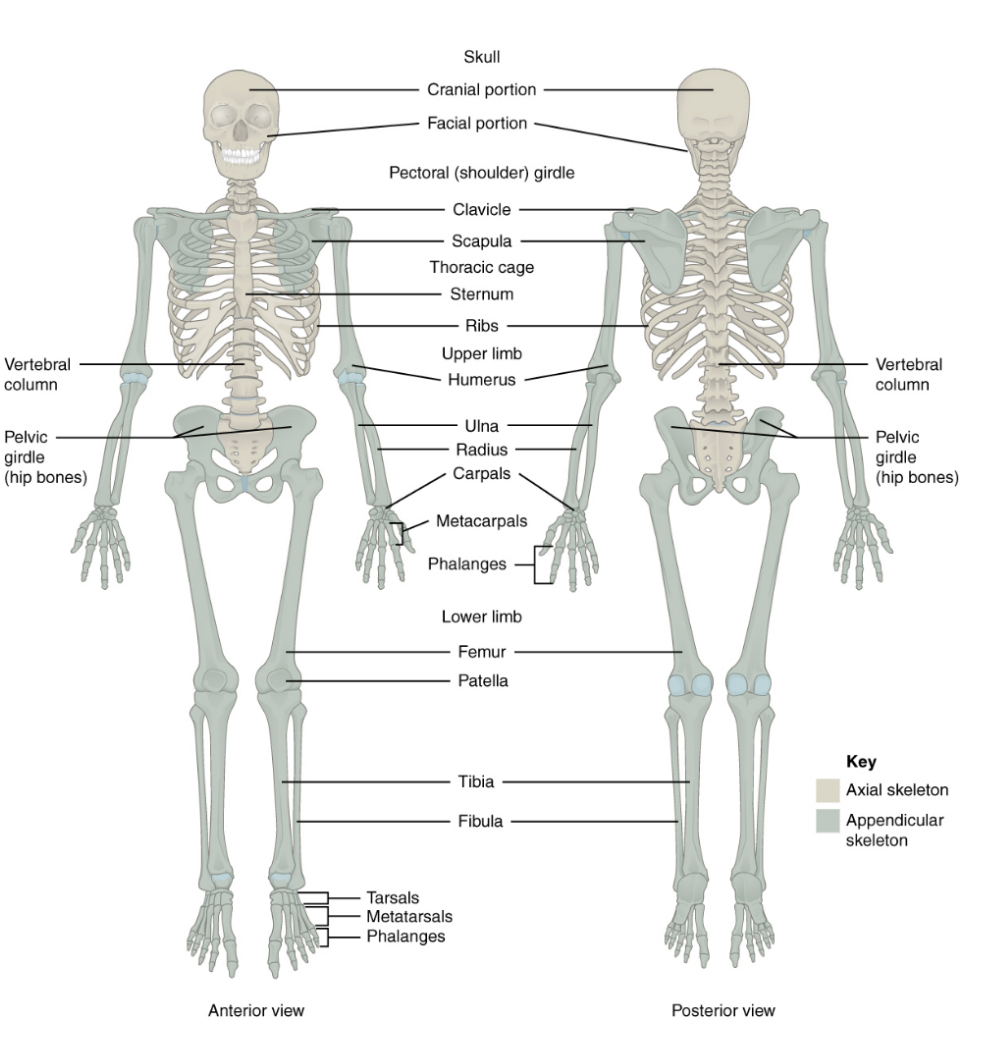
Appendicular Skeleton
Upper & lower extremities, associated pectoral & pelvic girdles
126 bones
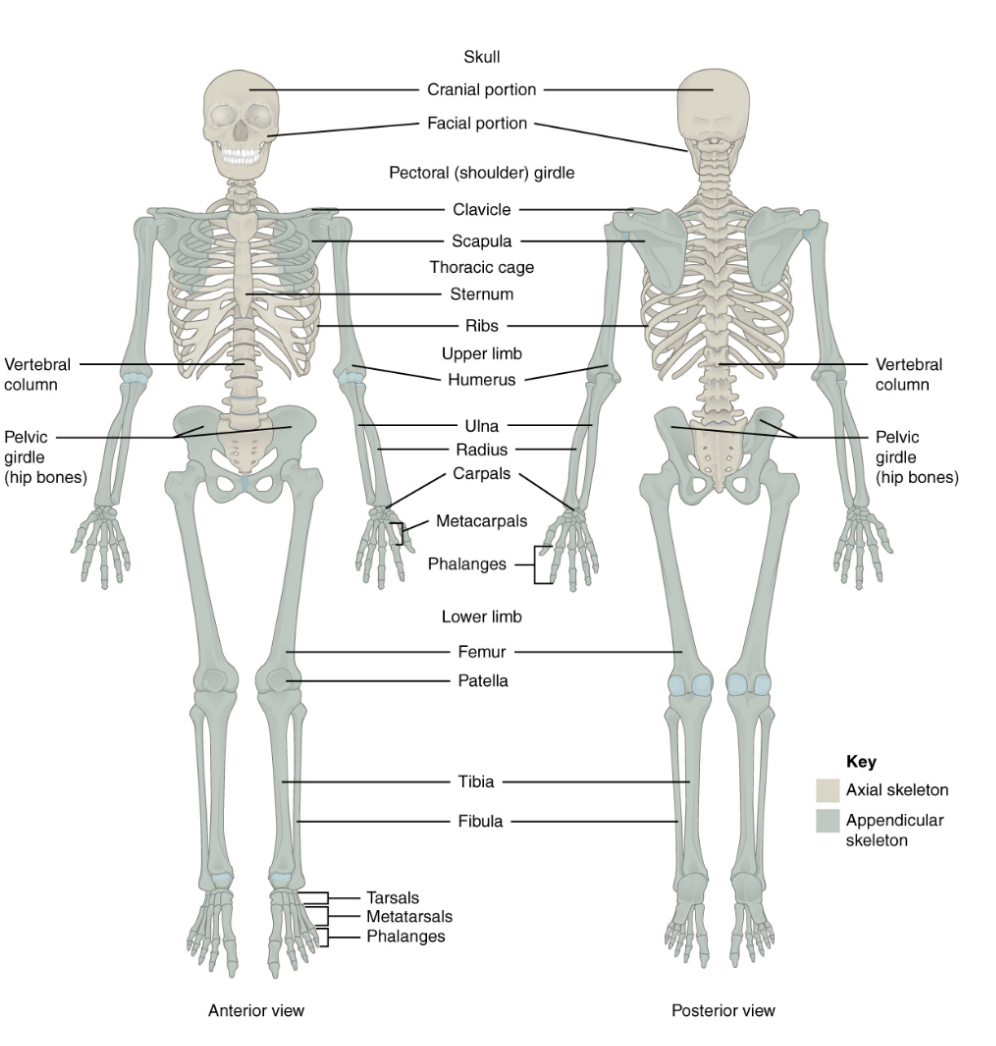
Projection
The point where muscles, tendons & ligaments attach
Depression/Groove/Opening
Blood vessels & nerves travel
Foramen
Meatus
Sinus
Fossa
Smooth Region
Place where bones articulate (meet and move together)
Foramen
A type of opening
Opening in bone through which nerves & vessels pass
Ex: vertebral foramen

Meatus
A type of opening
passageway through a bone
Ex: external auditory meatus

Sinus
A type of opening
Hollow space within a bone

Fossa
A type of opening
site of muscle attachment
Ex: supraspinous fossa

Cranial Bones
8 bones
Protect brain & form cranial cavity
Frontal bone (1)
Parietal bones (2)
Temporal bones (2)
Occipital bone (1)
Sphenoid bone (1)
Ethmoid bone (1)
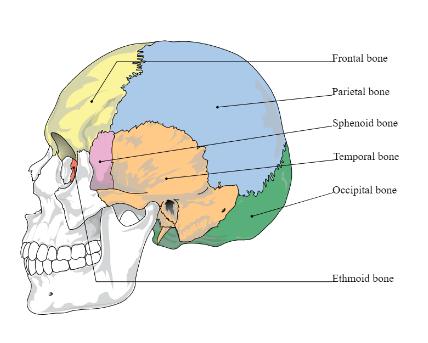
Parietal
Form sides & roof of cranial cavity
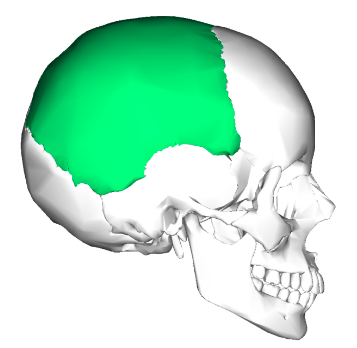
Temporal
Form inferiolateral portion of cranium
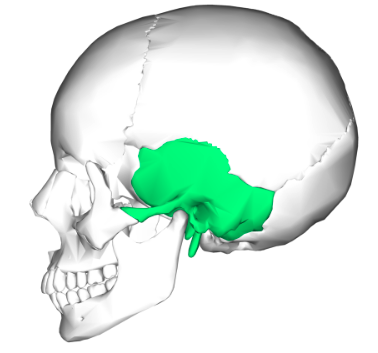
Frontal
2 separate bones at birth that fused soon after
Forms forehead & anterior part of cranial floor
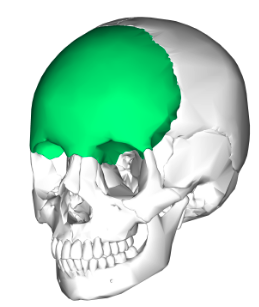
Occipital
Forms posterior & base of cranium
Contains foramen magnum where spinal cord merges with brainstem
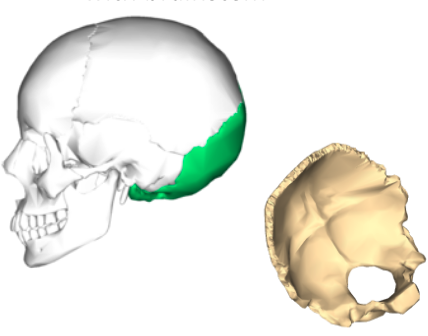
Sphenoid
Lies in middle part of base of skull
Articulates with all other cranial bones & holds them together
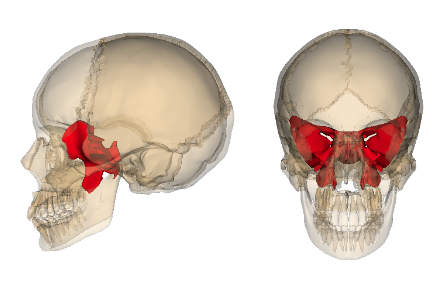
Ethmoid
Small bone sits anterior to sphenoid bone
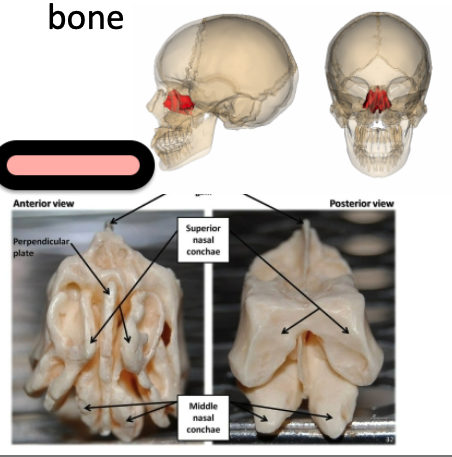
Facial Bones
14 bones
Forms framework of the face, and attachment points for facial muscles
Mandible (1)
Maxilla (2)
Zygomatic bone (2)
Nasal bone (2)
Lacrimal bones (2)
Palatine bones (2)
Inferior nasal conchae (2)
Vomer (1)
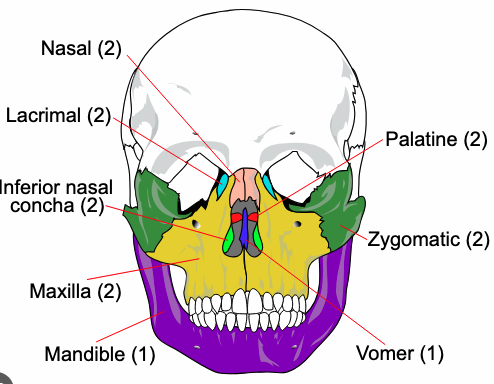
Maxilla
Upper jawbone
Articulate with every bone of the face except the mandible
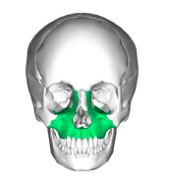
Zygomatic
Cheekbones
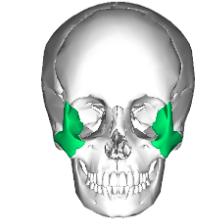
Lacrimal
Smallest bones of the face
Form medial wall of each orbit
Nasal
Forms bridge of the nose
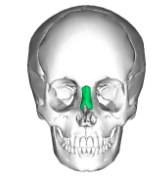
Palatine
L-shaped bones that form posterior aspect of hard palate
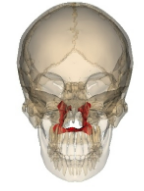
Inferior Nasal Conchae
Increase surface area of nasal cavity
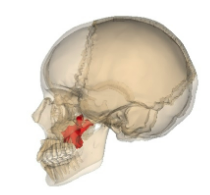
Vomer
Forms inferior portion of nasal septum
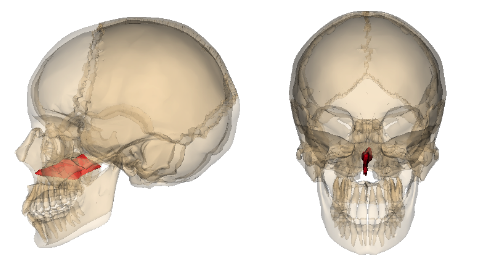
Mandible
Lower jawbone, largest & strongest facial bone
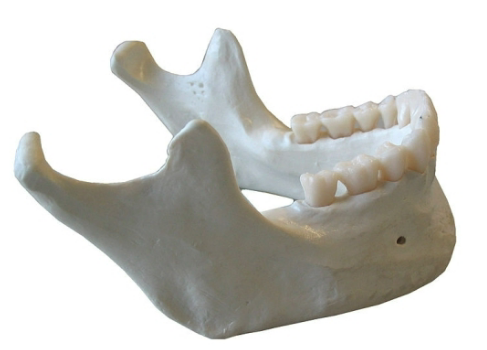
Sutures
Immovable joint where bones fused together
Sagittal
Coronal
Lambdoid
Squamous
Sagittal Suture
Between 2 parietal bones
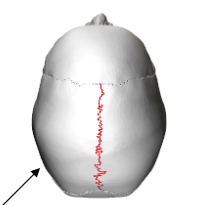
Coronal Suture
Unites frontal bone with both parietal bones
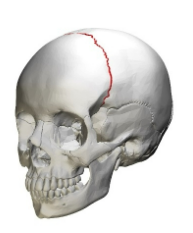
Lambdoid Suture
Unites 2 parietal bones with occipital bone
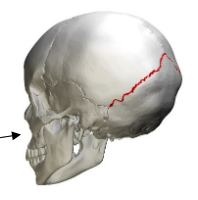
Squamous Suture
Unites parietal and temporal bones
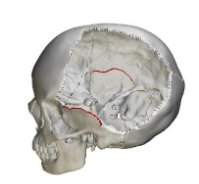
Fontanels of Fetal Skull
Soft spots consists of membranous gaps between incompletely formed bones
May not fully closed until child is 18 months old
6 presents at birth
Anterior fontanel (1)
Posterior fontanel (1)
sphenoidal (anterolateral) fontanels (2)
mastoid (posteriolateral) fontanels (2)
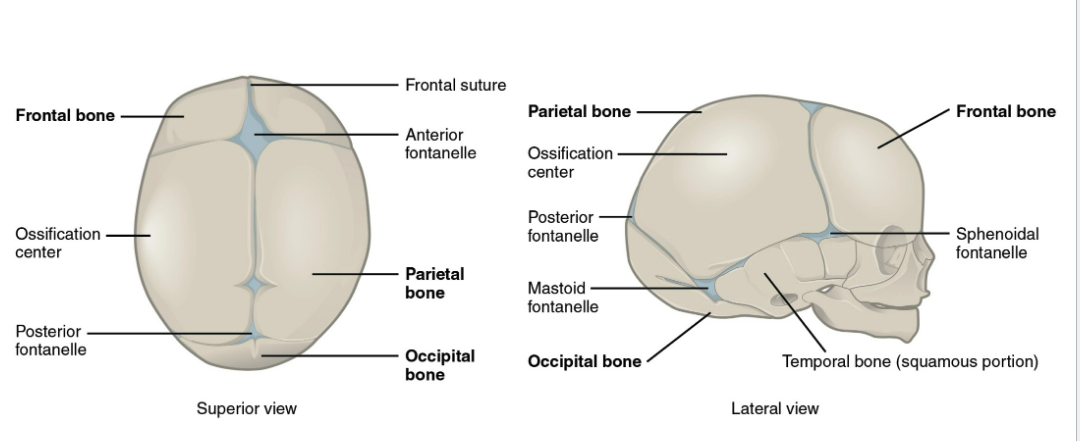
Hyoid Bone
Does not articulate with any other bones, supports the tongue
Inferior to skull between mandible & pharynx
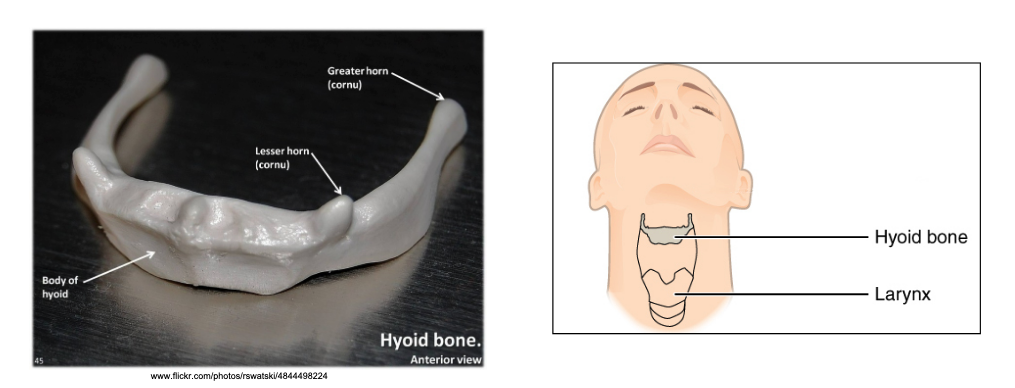
Condyle
A processes that form joints
A large round projection that forms joints

Head
A processes that form joints
Rounded projection found on the end of a bone, supported by a neck

Facet
A processes that form joints
A small, smooth, flat articular surface
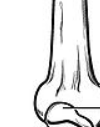
Tuberosity
A processes for connective tissue attachment
Large rounded projection usually with rough surface

Spinous Process
A processes for connective tissue attachment
Sharp, slender projection

Trochanter
A processes for connective tissue attachment
Large, blunt projection

Crest
A processes for connective tissue attachment
A prominent border or ridge

Styloid
A processes for connective tissue attachment
A pointy projection
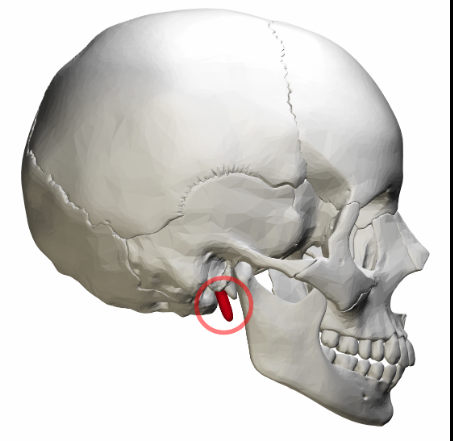
Vertebrae
33 bones or 26 fused
4 curvatures
Cervical (7)
Thoracic (12) (Primary)
Lumbar (5)
Sacrum fused (5)
Coccyx fused (4) (Primary)
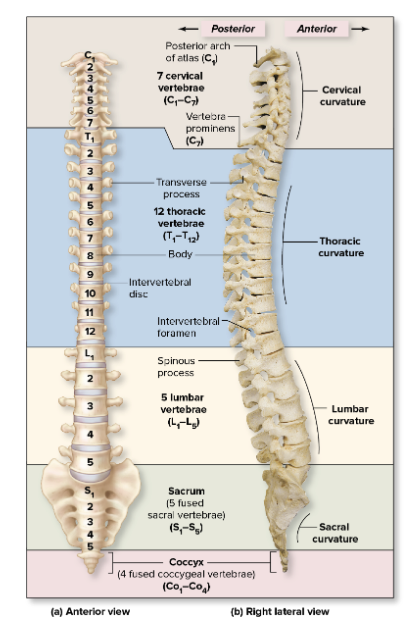
Body (Centrum)
Thick weight-bearing portion

Transverse Process
Two lateral projections

Vertebral Arch
Comprises of lamina & pedicle
Pedicle
Connect the vertebral body to the lamina

Lamina
Connect the spinous process to the pedicle

Spinous Process
Single posterior projection

Vertebral Foramen
Opening in vertebral arch
Spinal cord passes through
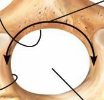
Cervical Vertebrae
7 bones
C1 is the Atlas
C2 is the Axis
C3-C6 are typical cervical vertebrae
C7 is vertebra prominens
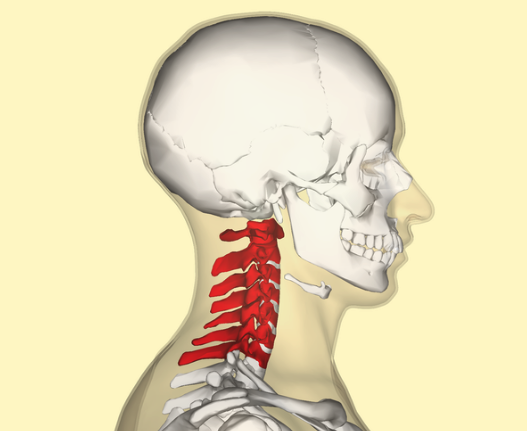
Typical Cervical Vertebrae
C3 to C6
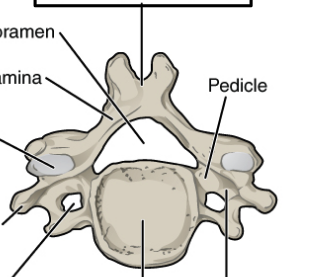
Atlas
C1
Articulates with occipital bone
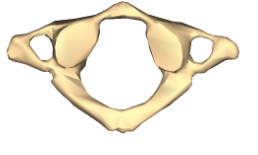
Axis
C2
Found beneath atlas, contains odontoid process (dens)
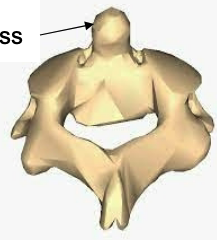
Vertebra Prominens
C7
Long spinous process compared to typical cervical vertebrae and not bifid (splits into two)
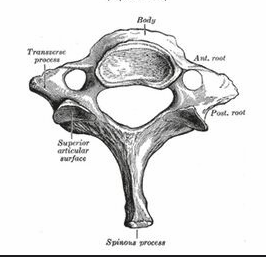
Transverse Foramen
A hole in each transverse process

Spinous Process
Bony projection that are bifid (split) or single point

Thoracic Vertebrae
12 vertebrae
Support rib cage, protect thoracic organs
Superior costal fascet
Superior articular fascet
Traverse costal fascet
Transverse process
Spinous process
Lamina
Pedicle
Vertebral foramen
Body
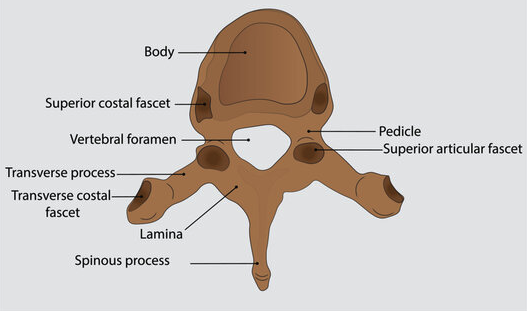
Lumbar Vertebrae
5 vertebrae
Inferior articular process
Superior articular process
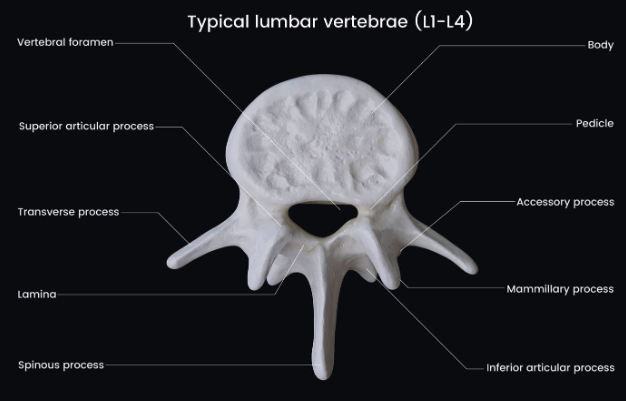
Sacrum
5 vertebrae fused into one for adults
Sacral promontory
Posterior/Anterior sacral foramina
Sacral canal
Median sacral crest
Lateral sacral crest
Auricular surface
Sacral hiatus
Body
Apex
Traverse ridges
Facet of superior articular process
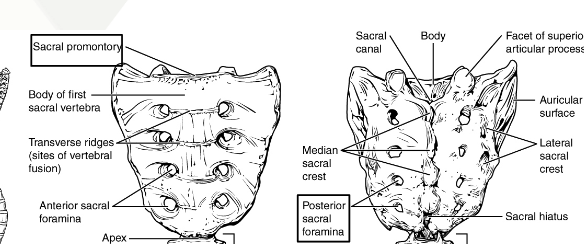
Coccyx
4 vertebrae fused into one for adults

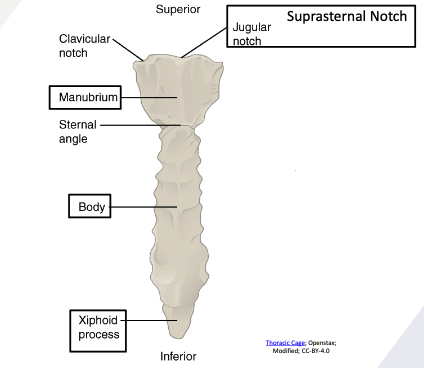
Sternum
Jugular notch
Clavicular notch
Manubrium
Sternal angle
Body
Xiphoid process